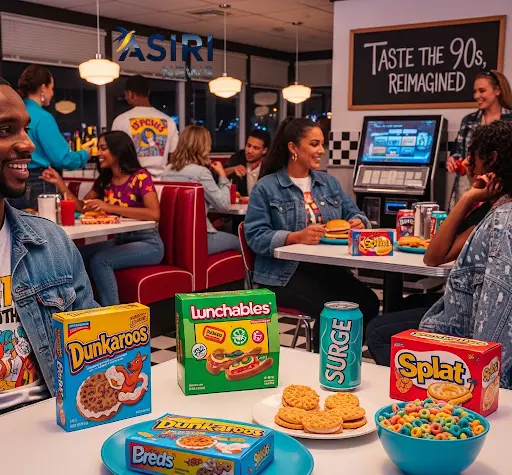In a powerful demonstration of the marketing potential of nostalgia, a growing number of iconic food brands are reinventing themselves by tapping into the emotional pull of the 1990s. This trend is not just about bringing back a forgotten product; it’s a strategic move to connect with the millennial generation, who now have significant purchasing power, and to captivate Gen Z, who are drawn to retro aesthetics and shareable content. By remixing beloved classics, these companies are aiming for a sense of comfort and familiarity in a rapidly changing world.

The trend is playing out across the industry, from snacks to beverages. Snack brand Walkers, for example, recently launched its first new permanent flavors in two decades, Masala Chicken and Sticky Teriyaki, as a way to stay relevant while appealing to the millennial generation who grew up with their original flavors. Similarly, Nik Naks has introduced new flavors to appeal to a younger audience while still being tied to its established brand.
The reinvention often involves a “modern twist,” with brands updating their formulas or marketing to fit contemporary tastes and consumer values. Kraft secretly made its Macaroni and Cheese healthier by removing preservatives and artificial colors, and Taco Bell adjusted its cheese recipe to be free of artificial food dye—changes that were made without fanfare to avoid backlash. These subtle shifts demonstrate a brand’s ability to evolve without losing the core product’s nostalgic essence. Another example is Krispy Kreme, which launched a “Throw Back Party” range of doughnuts and slushies with 90s-inspired flavors.
Beyond the products themselves, this nostalgia trend is a reflection of a broader cultural need. Consumer surveys have shown that nostalgia resonates strongly during periods of social and economic uncertainty. The feeling of longing for a simpler, “safer” time from their childhood provides a sense of comfort and stability. For brands, this emotional connection is a powerful tool to build brand loyalty. While millennials have a strong emotional pull to the brands they grew up with, Gen Z is discovering them through retro appeal and social media trends, creating a cross-generational marketing opportunity.
Ultimately, the success of these reinventions hinges on authenticity. As a branding expert noted, “Reinvention works when it taps into genuine memories and gives people a reason to try again. It fails when the core product is changed or feels gimmicky.” The most successful campaigns blend the past with the present, providing consumers with a product that is both a tribute to tradition and a fresh, relevant experience.



